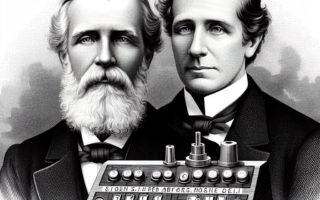The Mathematician Who Solved Fermat’s Last Theorem
Andrew Wiles, or more correctly Sir Andrew John Wiles KBE FRA, a renowned mathematician, is best known for his groundbreaking proof of Fermat’s Last Theorem, a problem that had puzzled mathematicians for over 350 years. Wiles’ achievement, announced in 1994, marked a significant milestone in the history of mathematics and solidified his reputation as one of the greatest mathematicians of our time. In this blog post, we delve into the life and work of Andrew Wiles, highlighting his contributions to mathematics and the impact of his groundbreaking proof.
Early Life and Education
Andrew Wiles was born on April 11, 1953, in Cambridge, England. From a young age, he showed a keen interest in mathematics, inspired by his father, a mathematics professor. Wiles studied mathematics at Oxford University, where he earned his bachelor’s degree in 1974. He then went on to earn his doctorate from Cambridge University, where he studied under the guidance of the renowned mathematician John Coates.
Fermat’s Last Theorem
Fermat’s Last Theorem, first conjectured by Pierre de Fermat in 1637, states that there are no three positive integers a, b, and c that satisfy the equation an + bn = cn for any integer value of n greater than 2. Despite numerous attempts by mathematicians over the centuries, a proof of this theorem remained elusive.
The Proof
In the early 1990s, Andrew Wiles embarked on a secret project to prove Fermat’s Last Theorem. Working in isolation for seven years, Wiles developed a proof using advanced mathematical techniques that combined number theory, algebraic geometry, and modular forms. In 1993, he announced that he had completed the proof, but it was later discovered that there was a flaw in his argument.
Undeterred, Wiles continued to refine his proof, and in 1994, he presented a corrected version of his proof at a conference in Cambridge. This time, his proof was met with widespread acclaim, and mathematicians around the world hailed it as a monumental achievement.
Andrew Wiles’ proof of Fermat’s Last Theorem was based on the Taniyama-Shimura-Weil conjecture, which connects elliptic curves and modular forms. He demonstrated that a special case of this conjecture applied to a specific class of elliptic curves would imply Fermat’s Last Theorem. Through intricate and advanced mathematics, Wiles proved the conjecture for those curves, thereby proving Fermat’s Last Theorem.
Legacy and Impact
Andrew Wiles’ proof of Fermat’s Last Theorem has had a profound impact on the field of mathematics. It not only solved one of the most famous problems in mathematics but also opened up new avenues of research in number theory and algebraic geometry. Wiles’ work has inspired a new generation of mathematicians and has cemented his place in mathematical history.
In recognition of his groundbreaking proof, Andrew Wiles has received numerous awards and honors, including the prestigious Abel Prize in 2016. His work continues to be studied and celebrated by mathematicians around the world, ensuring that his legacy will endure for generations to come.
Andrew Wiles’ proof of Fermat’s Last Theorem stands as a testament to the power of human ingenuity and the perseverance of the human spirit. His achievement has not only advanced our understanding of mathematics but has also inspired countless individuals to pursue their passions and strive for excellence. Andrew Wiles will forever be remembered as a pioneer in the field of mathematics, whose work has forever changed the landscape of modern mathematics.
Other sources:
The Proof of Fermat’s Last Theorem explained by Nigel Boston
Please Visit Our Sponsors:
We only support vendors that we use ourselves in our home. The links below are our own links or affiliate links but know that we use all of these now, or have in the past. As the author/creator of this blog, I also tutor mathematics on Wyzant, sell on Etsy, create content on TpT, and learn Korean on Rosetta Stone.





